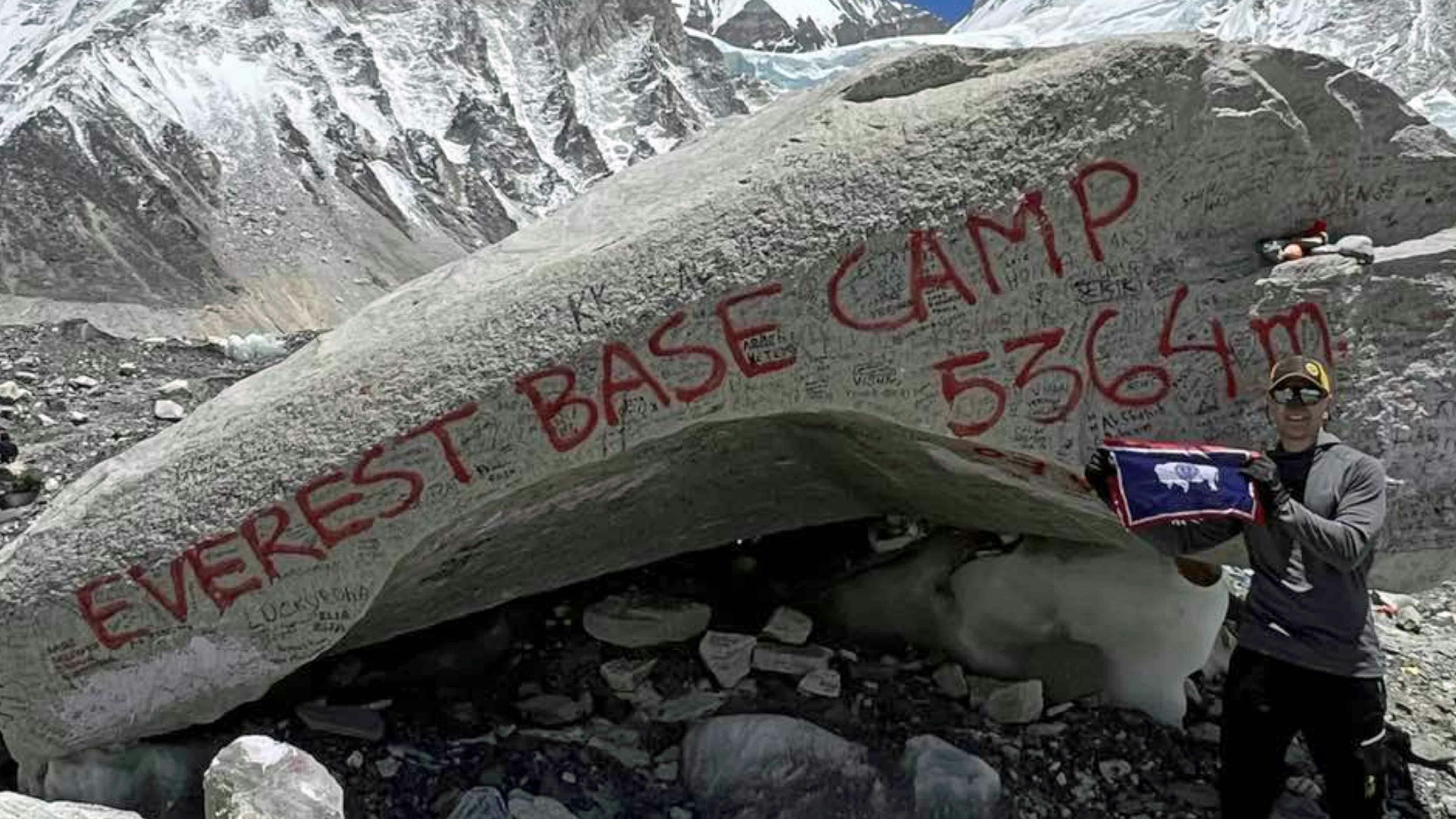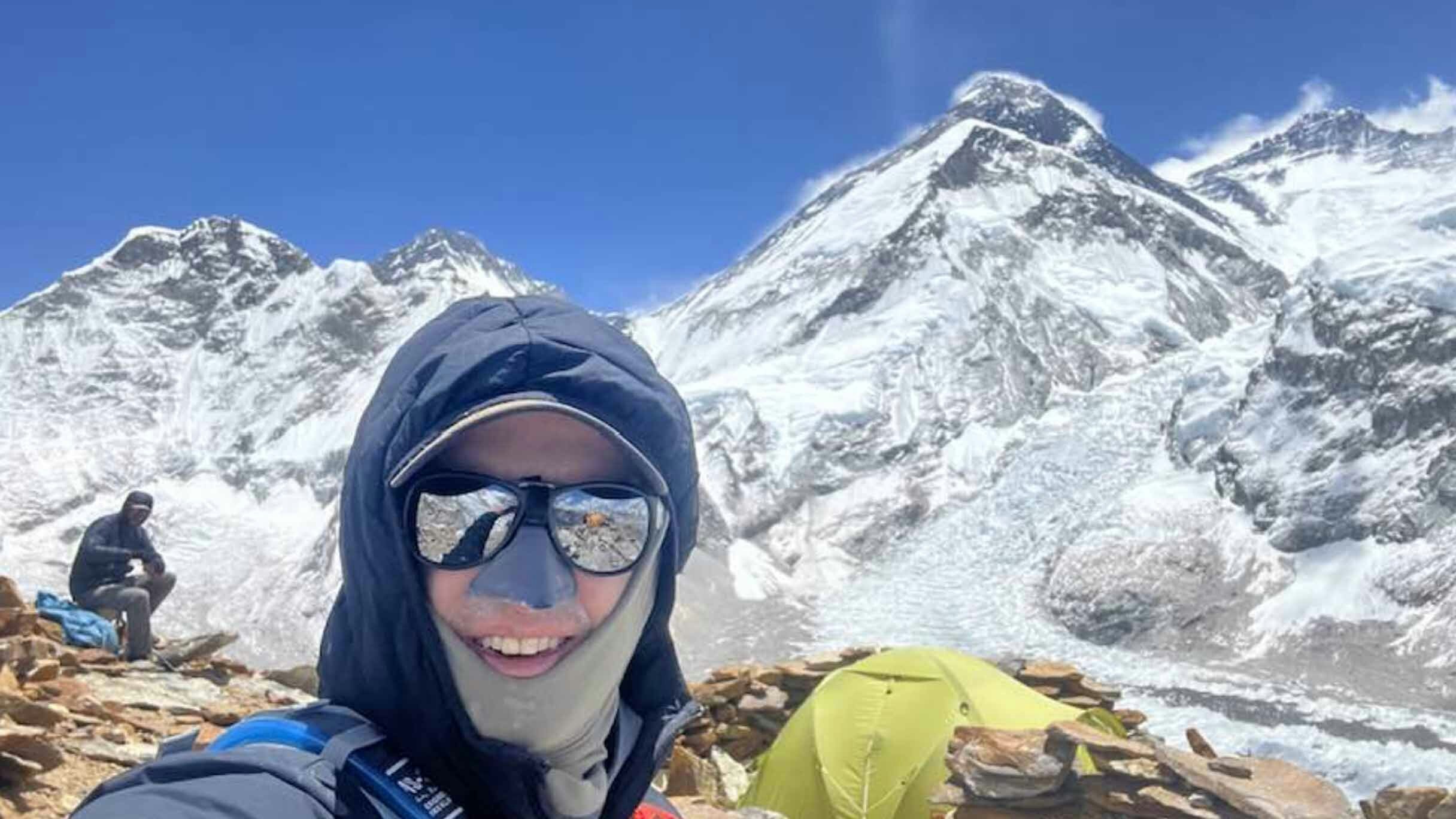The upper slopes of Mount Everest are one of the last places one might expect to find a mob scene.
But that’s exactly what Dr. Joe McGinley of Casper ran into this week as he attempted a “rapid ascent” of the world’s tallest peak.
McGinley said it wasn’t for doubt in his own abilities that caused him to call off his ascent a few thousand feet shy of the summit. Sketchy weather was part of it, but it was mostly mobs of other climbers — many of them obviously inexperienced and ill-prepared — including six reported to have died.
McGinley and his guide had reached “Camp 2” at 21,000 feet in elevation when they realized it was best to pull the plug on their quest, McGinley told Cowboy State Daily during a telephone call from Katmandu, Nepal, early Wednesday Wyoming time.
Six Deaths And Counting
McGinley said that earlier this week he could look up the mountain from Camp 2 and practically see the summit, which soars to an altitude of 29,031 feet, 8.5 inches on the China-Nepal border in the Himalayas. But he didn’t like what he saw.
“There was a visual line of people all the way up,” he said. “That’s a solid vertical line of people. If you get stuck behind somebody who is slower, you can’t pass them, and that just increases the risk of frostbite and everything else that can go wrong at those altitudes.”
To make matters worse, it was clear many of the climbers didn’t really know what they were doing, he added.
“There were people who didn’t know how to put on their crampons (mountaineering cleats), people who didn’t know how to tie on to a line,” McGinley said.
There were reports that six people had already died, and McGinley expects more to perish before the climbing season is over.
“The rescue helicopters were flying nonstop,” he said.
So, he decided he didn’t want to be a part of that scene, returned to basecamp and left the mountain.
“Sometimes, an experienced climber knows that the best thing to do is turn back around,” he said.
‘The Seven Peaks’ Will Have To Wait
McGinley has plenty of mountain climbing experience.
His driving goal is to conquer the “Seven Peaks on Seven Continents,” one of the mountaineering’s most prestigious accomplishments.
It involves climbing the highest peak on each of the seven continents. Those include Everest in Asia, Kilimanjaro in Africa, Mount Elbrus in Europe, Denali in North America, Mount Aconcagua in South America, Mount Kosciuszko in Australia and Vinson Massif in Antarctica.
McGinley has climbed all of them except for Everest and Vison Massif. His plan was to add Everest to his tally this month, and then finish up with Vison Massif later this year.
But with another attempt at Everest on undetermined hold, he’s decided to delay tackling Vison Massif as well. He wants to conquer Everest before heading to Antarctica, he said.
Nepal Just Too Liberal With Permits
Folks back home in Wyoming might envision the upper reaches of Everest to be a desolate place, but it’s become increasingly popular and commercialized in recent years, McGinley said. He was attempting to ascent the south face of Everest from the Nepal side.
The Nepalese government issued 500 climbing permits, which McGinley said is excessive.
“If you figure 500 climbers, and every one of them has at least one sherpa or guide with them, that’s 1,000 people on the mountain all at the same time,” he said.
That’s just too many, McGinley said, and judging by what he saw on mountain, the Nepalese government is allowing to many novice mountaineers up there, which can turn things deadly,
The Chinese government this year closed the other side approaching the north face ascent, he added. When he makes another attempt at Everest, McGinley said he’ll likely try the north face in hopes of avoiding another mob scene.

‘We Felt Great’
Having to turn back was frustrating, McGinley said, because he felt physically capable of making the final ascent.
“We felt great,” he said of he and his guide. “It demonstrated to me that my training worked, and it had properly conditioned me to make that climb.”
For months before attempting a climb McGinley prepares his body by breathing “low-oxygen air” to simulate conditions at extreme altitudes.
“I sleep with what is essentially a sealed tent over my bed with a generator blowing in low-oxygen air that simulates an altitude of 18,000 feet,” he previously told Cowboy State Daily. “I regularly workout on a treadmill breathing through a mask with air that simulates 24,000 feet in altitude.”
Remembering The Good Parts
Despite having to turn back, McGinley said he has no regrets.
“The climbing was great, and the mountains and the valleys were fantastic to see,” he said Wednesday. “The sherpas were some of the most amazing people I’ve ever met. I wouldn’t trade those experiences for anything.”
And reaching 21,000 feet, while feeling he still had plenty of gas left in the tank, proves his training regimen works and will prepare him for the next attempt.
“That altitude, 21,000 feet, is the second highest I’ve ever been and the highest altitude at which I’ve slept,” he said.
On Mount Aconcagua in South America, the summit was about 23,000 feet, he said.
And he’s certain that turning back when he did was the right thing to do.
“We didn’t get everything we wanted, but you have to make the right choices, otherwise you’ll be permanently up on that mountain,” he said.
Mark Heinz can be reached at mark@cowboystatedaily.com.





